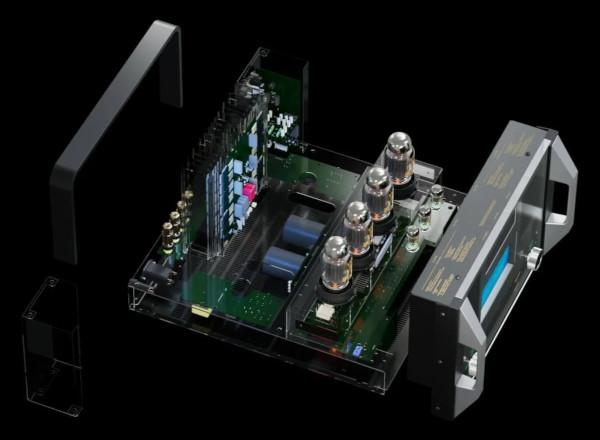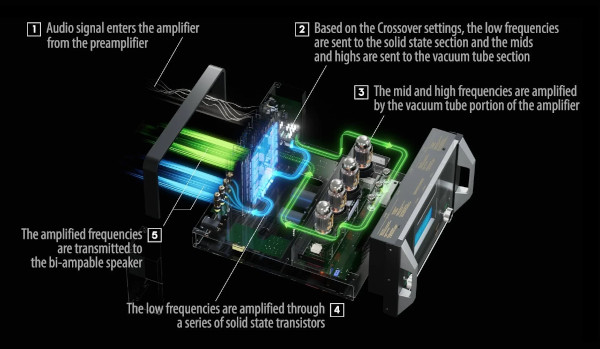Tubes or Solid-State? No Need to Choose with McIntosh’s New Hybrid Drive Tech

The goal of hi-fi was then as it is now: to reproduce music recordings as faithfully as possible. The 50W-1 was awarded five patents for its groundbreaking symmetrically driven balanced-output stage, which became known as the “unity coupled circuit” — a design that has survived the decades.
In the 73 years since its founding, McIntosh has not rested on its laurels and continues to innovate in a never-ending quest for sonic perfection. The company’s latest innovation is something called Hybrid Drive — a technology developed to, as McIntosh puts it, “answer a question the world's most discerning music listeners have been asking for over 50 years: How can I enjoy the rich sound of vacuum tubes and the power of solid-state circuits in a single, easy to use, and best-of-class product?”
The heart of the concept is a dual-personality amplifier — one divided into solid-state and vacuum tube sections. When the audio signal enters the amp, it’s split: low frequencies go to the solid-state section, while the mids and highs are routed to the tube section.
“McIntosh’s Hybrid Drive technology is a combination of two of our core technologies,” explains McIntosh president Charlie Randall. The company was founded on tube amps but has been building solid-state amplifiers since the mid-1960s, including the iconic MC3500 that powered the Woodstock Festival in 1969 (20 were used to drive two massive PA systems). “People who are really discerning want to put tubes on the tweeter and midrange section of the loudspeaker and use solid-state for a little more dynamic bass to give them the best of both worlds.”

The dual-amp scheme is built on a single chassis with an adjustable crossover that lets the listener determine where the split between the bass and mid/high frequencies occurs. The solid-state low-pass and vacuum tube high-pass filters each provide multiple settings between 100 Hz and 1 kHz and a dedicated level control.
“You can use the vacuum tube amp to get the warm sound tonal characteristics of vacuum tubes but you still get the punch and high headroom of a solid-state amplifiers for your woofers and low frequencies,” note Pete Stethers, senior electronic design engineer. “We also provide an active crossover that allows you to precisely match the response of the amplifiers to that of the loudspeaker with no interference at the frequency crossover point.”
Because Hybrid Drive components have both a solid-state output and tube output, the listener can select which they want to listen to and — here’s the cool part — switch between them on the fly.
“For instance, with a piece of jazz you might want to listen through a vacuum tube but with rock maybe you want solid-state,” Randall says. “It’s your personal preference and it gives you the flexibility to pick and choose what you want to hear through which technology.”
Even better, having both amplifier types in one component takes the guesswork out of deciding what size tube or solid-state amplifier to choose, Randall adds.
McIntosh is currently offering the Hybrid Drive design in six models: the dual-mono MC901 amplifier, the C12000 preamplifier, three integrated amplifiers — the MA12000, MA352, and MA252 — and the MCD12000 CD/SACD player.



















































